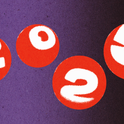It’s not often that the children’s maths homework sheds fresh light on the challenges of investing but I can now point to at least one occasion when it did, thanks to a simple game that our 10-year-old brought home. It’s a puzzle that anyone can try and works best as a contest between two or more players.
If you want to give it a go—and I heartily recommend it—here’s what to do. Each player draws a three-by-three grid on a piece of paper and they then take turns to roll a dice, writing whichever number they throw into one of their nine squares. The object of the game is to fill the grid with three, three-figure numbers, the winner being the player whose three numbers total closest to 1,000.
This proved a fascinating challenge. The obvious goal is to ensure each line of numbers is as close to 333 as possible but that is much easier said than done when your fortunes depend on the roll of a dice. After initially struggling, I started to think about the strategy you need to follow to arrive at the right destination, and this is when its relevance to investing started to dawn on me.
To succeed you must understand that some of the decisions matter more than others. Specifically, getting the best combination of numbers in the left-hand column matters more than what ends up in the right: hundreds have a much bigger bearing on the total. So you have to watch the rolls carefully and seize on numbers for the left-hand squares that will add up to eight or nine. Any that don’t fit must be treated as tens or units.
Put like that it’s blindingly obvious but it wasn’t until I had actually played the game unsuccessfully that I managed to work it out. Another lesson that became clear is that if you wait too long to fill your three left-hand squares, you will eventually be forced to accept whatever comes up on the last roll of the dice; everything will then depend on whether you can throw the number you need at exactly the right moment.
This game offers a wonderful illustration of why it is so important to identify which decisions will have a really big impact on your ability to achieve your ultimate goals, and which can be left much more to chance. It also teaches you that delaying major decisions too long can leave you with little room for manoeuvre and relying on a large slice of luck to get the result you are hoping for. These are both very valuable lessons for any investor, although I wouldn’t claim for one moment that this game can show you how to identify and prioritise the major decisions, only that it is important to do so.
Of course, this exercise was never intended to offer the children an insight into investment or financial decision-making, but to me it has value as a tool to help people understand some important lessons. Sadly I suspect that it will not form a part of the financial education that our children can expect to receive further on in their school careers. If so, this seems a missed opportunity. Games are a very good way to demonstrate principles and the ones that this game highlights are important, easy to understand and have a relevance much wider than one weekend’s maths homework.













